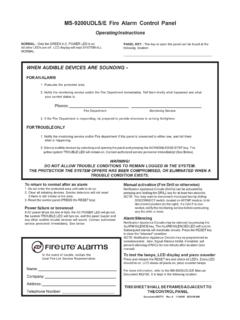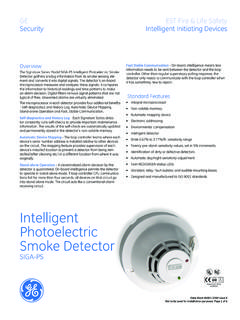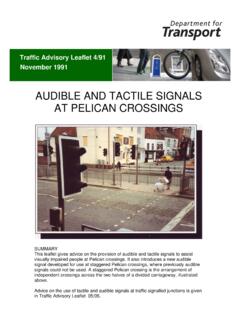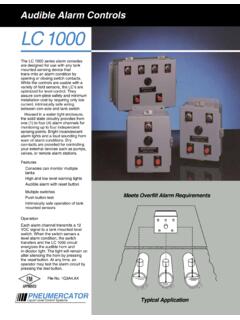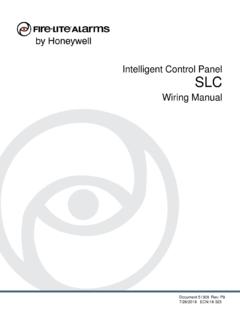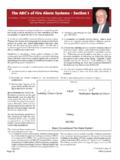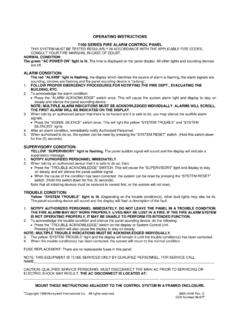Transcription of FIRE ALARM SYSTEMS CONCEPT - Telluride Fire Dist
1 Telluride fire Protection District fire ALARM SYSTEMS Policy Version 03/2007 fire ALARM SYSTEMS POLICY Telluride fire PROTECTION DISTRICT TABLE OF CONTENTS fire ALARM PROTECTION POLICY PLAN REVIEW SUBMITTAL Plans and Specifications Zone Designation Specifications Retransmission of Signal Permit Fees Review Letter Table of Contents Equipment List Battery Type and Capacity Wire Size Calculation Point-to-Point Wiring Diagram Riser Diagrams Warranty Information Manuals Written Narrative GENERAL REQUIREMENTS Required Installations and Standards Primary fire ALARM Panel Type and Location of Devices Supervision Secondary Power Supply Labeling Certification Date Tag Monitoring Company Identification Label Outside Horn and Light ALARM Audibility Area of ALARM Audibility Trouble Indications Remote Enunciators Smoke Detection Thermal Detection Duct Detection Manual Pull Stations Magnetic Hold-opens Multiplex SYSTEMS Computer Driven SYSTEMS Replacement Devices Key Box fire ALARM Zones Zone Definitions Retransmission of ALARM Signals fire Command Centers ALARM SYSTEMS with Elevators ALARM SYSTEMS with Emergency Voice Communications ALARM SYSTEMS with Telephone Communications ALARM system in Sprinkled Buildings fire ALARM Monitoring Final Acceptance Testing fire ALARM PROTECTION POLICY The purpose of a fire ALARM system is to provide an early warning, allowing occupants time to react and evacuate and to provide a faster fire Department response.
2 This policy provides the minimum requirements/guidelines acceptable to the fire District, in conjunction with NFPA and International fire Code requirements not specified in this polity. The designer who follows this policy will find quicker fire District approval with little or no changes required. PLAN REVIEW SUBMITTAL Every fire ALARM plan submitted for review must contain the items required in through Every fire ALARM plan submitted that requires the installation of 20 or more initiating devices shall comply with this entire section. Plans and Specifications: A minimum of two complete sets of plans and specifications (cut sheets) are required Zone Designations: Shall be as required by this policy. See Section Specifications: Specification sheets (cut sheets) shall provide information on component operation, primary panel configuration, along with all devices and their operation. Retransmission of Signals: Signals required to be retransmitted to a monitoring station shall be in accordance with this policy.
3 Permit Fees: Permit fees shall be assessed by the fire District and paid prior to issuance of the permit and any work on the system beginning. Review Letter: Following the fire District review, a letter will be provided to the fire ALARM Contractor noting any deficiencies and or corrections to be made to the system . The review letter must be replied to, prior to a permit being issued. Table of Contents: To provide for quick reference during the plan review. Equipment List: Shall provide the number of devices, part numbers and description of equipment provided Battery Type and Capacity: Calculations supporting the capacity proposed shall be provided. Wire Size Calculation: The plan submittal shall include the statement that a wire size calculation has been performed and that the proposed system meets the equipment manufactures specifications. The fire District may require supporting documentation.
4 Point to Point Wiring Diagram: The fire District requires a point to point diagram showing the exact number of devices per circuit superimposed over a floor plan. Riser Diagrams: Riser diagrams shall indicate the zone configuration and designate the number of devices per floor. Warranty Information: The fire ALARM contractor shall designate who will be responsible for any malfunctions during the warranty period. Manuals: Operation and Maintenance manuals shall be provided. Copies of the manuals shall also be provided to the owner at the completion of the project. Written Narrative: A written narrative detailing the operational sequence of all alarms ( ALARM zones) shall be provided. A copy of this narrative shall also be provided to the owner at the completion of the project. GENERAL REQUIREMENTS Required Installation and Standards: An approved fire ALARM system shall be installed in the following occupancies: Group A - having an occupant load of 300 or more Group B - as required by the International fire Code as amended Group E - as required by the International fire Code as amended Group F - two or more stories in height and having an occupant load of 500 above or below the lowest level of exit discharge Group H - as required by the International fire Code as amended Group I - as required by the International fire Code as amended Group M - as required by the International fire Code as amended Group R - as required by the International fire Code as amended Exception.
5 An ALARM system need not be installed in buildings not over two stories in height when all individual dwelling units and contiguous attic and crawl spaces are separated from each other and public or common areas by at least one hour fire partitions and each individual dwelling unit or guest room has an exit directly to a public way, exit court or yard. Area separation walls shall not be used to define individual buildings. All fire ALARM SYSTEMS shall conform with the International fire Code, the most recent requirements of NFPA-70 National Electrical Code, and NFPA-72 National fire ALARM Code. All fire ALARM system components shall be UL or FM listed. All initiating device circuits shall provide the performance capabilities of Class A" per NFPA-72 table , 2007 edition. All notification appliance circuits shall provide the performance and capabilities of Class A" per NFPA-72 Table , 2007 edition.
6 All signaling line circuits shall provide the performance and capabilities of "Style 6/Class A" per NFPA-72 Table , 2007 edition. Primary fire ALARM Panel: The primary fire ALARM panel shall be located in a heated location approved by the Authority Having Jurisdiction ( ) ALARM verification may be required as a feature of the primary fire ALARM panel when it serves 50 or more devices. The zone definition for an automatic fire ALARM lists typical devices. Type and Location of Devices: The fire ALARM matrix shall list the types of devices and their locations. In dwelling units and guest rooms a system smoke detector and an isolated thermal shall be provided. Smoke detection shall sound a local ALARM only. Heat detection shall sound an evacuation ALARM and activate a signal at the fire ALARM panel. In common areas and storage rooms, system smoke detectors shall be provided. Any lockable room or area that has detection shall have a remote indicating light unless the system is an addressable system .
7 Exceptions: Rooms with Magnetic hold-open devices. Remote enunciator if lamp test switch provided. Secondary Power Supply: A secondary power supply is required for all fire ALARM SYSTEMS . Secondary power supply shall be in accordance with Section of NFPA-72, 2007 edition. Labeling: All fire ALARM panels, remote enunciators, red remote indicating lights, and firefighter telephone jacks shall be labeled. Labels shall be word graphic, of a durable material and permanently attached. Engraved plastic labels are recommended. Temporary labels for new fire ALARM installations will not be acceptable. TYPICAL LABELING EXAMPLES Certification Date Tag: A tag showing the date of certification, company name and name of the individual performing the certification inspection shall be provided. This tag shall be attached to the inside of the fire ALARM primary panel. Monitoring Company Identification Label: A Label identifying the company name, address, business telephone and 24 hour telephone shall be provided.
8 This label shall be adhesive and placed on the front of the primary fire ALARM panel. Outside ALARM & Light: Every building shall have an outside audible ALARM (minimum 85db) and flashing light (minimum 80,000 candlepower). The outside ALARM and light shall be located above the fire Department Connection (FDC) or as approved by the The outside audible ALARM and light shall activate upon all evacuation alarms. fire ALARM outside audible ALARM shall be silenced with the primary panel silence switch ALARM Audibility: All fire ALARM SYSTEMS shall provide a sound level of not less than 60db at 10 ft. (3m) or more than 120db at the minimum hearing distance from the audible appliance in all areas of the building with all intervening doors closed. The primary concern is that 60db be provided at the pillow of all sleeping areas. The system shall also be capable of providing 60 db to all areas of the building simultaneously.
9 Zone Description Floor Level Tamper ALARM Second Floor Automatic fire ALARM First Floor Low Air ALARM Parking Garage Occupancies such as nightclubs, discos, dining and drinking establishments with amplified music, shall have a fire ALARM activated power disconnect to the sound source. All other occupancies with a normally high ambient noise level shall install strobe lights that activate with the horns. The horns in these occupancies shall provide an ALARM 15 db over ambient up to a maximum of 120 db. Area of ALARM Audibility: Buildings 3 stories or less in height shall ALARM the entire building. Exceptions: No horns shall be installed within stair towers. No audible ALARM device signaling evacuation ALARM shall be installed in the fire Command Center or adjacent to the primary fire ALARM panel ( , 10-15 feet). No audible ALARM device signaling evacuation ALARM shall be installed in an elevator car.
10 All buildings 4 stories and higher shall sound the evacuation ALARM on the fire floor, the floor above and the floor below. Exceptions Stair towers in buildings equipped with an Emergency Voice Communications SYSTEMS (EVCS), shall sound an evacuation ALARM only in the same stair tower zone which initiates the ALARM . No audible ALARM device signaling evacuation ALARM shall be installed in the fire Command Center or adjacent to the primary fire ALARM panel ( , 10-15 feet). No audible ALARM device signaling evacuation ALARM shall be installed in an elevator car. All fire ALARM devices of kitchen hood extinguishing SYSTEMS shall sound an evacuation ALARM the same as any other device on that floor. Exception Single station smoke detectors located within dwelling units shall not cause an evacuation ALARM to sound. The activation of any tamper zone shall not sound an evacuation ALARM . All fire ALARM SYSTEMS shall be capable of sounding an "all call" evacuation ALARM .
